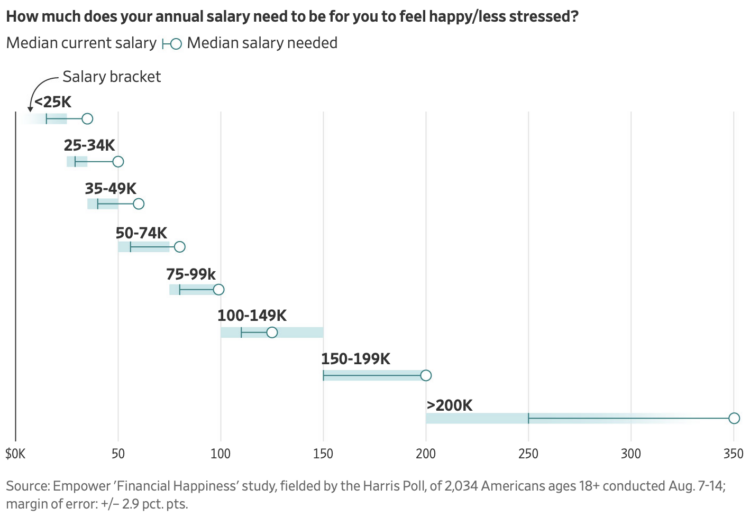Lindsey
Shared posts
Big Pharma to raise US list prices of 500 drugs in January: Report

Enlarge (credit: Getty | Bill Diodato)
January is usually a big month for hiking the list prices of drugs in the US—and it looks like 2024 will be no different. Pharmaceutical companies plan to raise the US list prices of more than 500 prescription medications this month, and more are expected to be announced in the coming weeks. That's according to a report from Reuters, which is based on data from the health care research firm 3 Axis Advisors.
The high-profile drug makers with plans to increase prices include giants such as Pfizer, Sanofi, and Takeda.
This year's tally of 500 is in line with the past few years, with 452 list price increases as of January 1, 2023, and a high of 602 on January 1, 2021, according to data from 46brooklyn, a drug pricing nonprofit related to 3 Axis Advisors. Overall, drug makers raised the list prices of 1,425 drugs in 2023, down slightly from 1,460 in 2022.
The Pixel 8 parts store goes live, should be up for 7 years

Enlarge / iFixit's Pixel 8 Pro display fix kit. (credit: iFixit)
Over the holiday break, Google and iFixit added a new batch of parts to the Pixel parts store. The companies now sell genuine parts for Google's latest flagship phones: the Pixel 8 and 8 Pro.
The most common replacement will probably be the screen, which costs $160 for the Pixel 8 and $230 for the Pixel 8 Pro. The product described as a "rear case" is the entire aluminum body of the phone, with the rear glass, camera bar, camera cover glass, side buttons, and charging coil. The Pixel 8 version of this will run you $143, while the 8 Pro version is $173. The batteries are both $43.
If your camera breaks, get ready for some serious sticker shock: The Pixel 8 Pro rear camera assembly is $200 for the bundled set of three cameras. For reference, a Galaxy S23 Ultra camera assembly (four cameras) is $142 from iFixit, while the iPhone 14 Pro Max rear camera assembly is $150. Interestingly, the Pixel 8 also has $200 worth of camera parts despite having one less camera by skipping the complicated periscope zoom lens. The Pixel 8 parts come in separate pieces: $143 for the main camera and $63 for the ultra-wide. This is a ton of money to spend on the camera portion of a phone, and while that's great for shutterbugs, for people more focused on productivity uses, it would be nice not to have to pay for all this. Along with the $43 front camera, a Pixel 8 is $700 and has $243 worth of camera parts!
It’s a new year, and these are now the only EVs that get a tax credit

Enlarge (credit: Getty Images)
It's a new year, and while few of us still have the headache of needing to remember to write the new year on checks, 2024 brings a new annoyance of sorts. As of yesterday, tough new US Treasury Department rules concerning the sourcing of electric vehicle batteries went into effect; as a result, most of the battery and plug-in hybrid EVs that were eligible for the Internal Revenue Service's clean vehicle tax credit until Sunday have now lost that eligibility.
Under the federal government's previous program to incentivize the adoption of plug-in vehicles, it offered a tax credit up to $7,500 based on the battery capacity of a BEV or PHEV. Once a car maker sold more than 200,000 plug-in vehicles, it lost eligibility for the tax credit—only Tesla and General Motors reached this threshold.
Changes came as part of the Inflation Reduction Act of 2022 and went into effect at the start of 2023. Thanks to heavy industry lobbying, credits linked to union-made EVs went by the wayside, with US Senator Joe Manchin acting as the point man for companies like Toyota that sought to slow down the EV transition.
10 actually good things that happened in 2023

This was a hard year. But these 10 news stories remind us a better future is possible.
I’m not going to lie to you: 2023 was an ugly year. War rages in Gaza, Ukraine, and Sudan, with millions displaced, injured, or dead. On top of global strife, AI-fueled misinformation runs rampant, we’re barreling past climate goals, and abortion access dwindles.
But when the world is mired in horrible things, it’s important to imagine a better future; without hope, new solutions wouldn’t be possible. In 2023, despite everything, there were moments when that hope actualized into meaningful wins.
From the Supreme Court upholding America’s toughest animal cruelty law to new developments in curing sickle cell disease, 2023 saw progress across policy and scientific research that will help shape well-being for humans and animals alike for years to come. Here are 10 breakthroughs in 2023 that help remind us that a better future is worth fighting for. —Izzie Ramirez
The economy started undoing 40 years of rising inequality
Among the many surprises of the post-pandemic economy was a deep reversal in long-running trends of wage inequality. Over the last three years, an unusually tight labor market has undone an estimated 38 percent of the wage inequality between poor and wealthy workers that shot up between 1980 and 2019. Researchers dubbed this “the unexpected compression.”
Young workers without college degrees benefited the most. That’s especially good news given the ongoing debates around “deaths of despair,” where economists are trying to figure out how to counter the rising mortality rates from heart disease and drug overdose among Americans with the least education. The boosted wages were concentrated among workers who changed jobs. Low-wage workers tend to raise their pay faster by switching jobs than by staying put, but the costs of leaving a bad and low-paying job, especially with the relatively weak American safety net, often keep workers in place.
Toward the end of 2023, the wage compression looked to be cooling off, but not reversing. To be clear, inequality remains a defining feature of the American economy, evidenced by calling its reduction an “unexpected” compression. The Biden White House is pushing some ideas that could help solidify these trends, like banning noncompete agreements or boosting workers’ bargaining power. With a few structural changes and a bit of luck, 2024 could build on these trends, transforming our expectations so that reducing inequality becomes the norm. —Oshan Jarow
After completing phase 3 trials, psychedelic-assisted therapy seeks FDA approval
In September, MAPS Public Benefit Corporation (BPC) — a company developing prescription psychedelics — published positive results from their second phase 3 clinical trial on MDMA-assisted therapy for PTSD. (Phase 3 trials feature thousands of patients, and are mostly randomized and blinded.) CEO Amy Emerson stated that these results, published in Nature Medicine, were the last hurdle before applying for FDA approval of MDMA-assisted therapy.
For decades, new and effective treatments for mental illnesses like PTSD, depression, and anxiety have been scant. Over the same period, a resurgence in clinical research on psychedelics has been amassing evidence of their potential for treating precisely these conditions (the potential benefits of psychedelics extend beyond therapy, but that’s another story).
The Multidisciplinary Association for Psychedelic Studies (MAPS), the nonprofit that owns MAPS PBC, has been patiently working toward FDA approval of MDMA therapy since its founding in 1986. This most recent randomized study included 104 participants who’ve lived with PTSD for an average of 16 years. Participants were split into a treatment group that received MDMA plus three monthly therapy sessions, and a placebo group that received extended therapy sessions but no MDMA.
86.5 percent of the treatment group experienced measurable benefits, and 71.2 percent no longer met the criteria for a PTSD diagnosis. The therapy-only group still experienced significant benefits, but less so: 69 percent recorded clinically significant improvements, with 47.6 percent no longer meeting PTSD criteria.
In December, MAPS PBC officially filed its application to the FDA, concluding a nearly 40-year effort. The approval of MDMA-assisted therapy would mark a watershed moment in the world of mental health, and likely pave the way for other psychedelic drugs, like psilocybin, to follow. —OJ
It’s another year of massive progress in developing and deploying vaccines
This past year saw a wave of progress in vaccines and treatments for malaria (a disease that still kills about half a million people in Africa each year), tuberculosis (that killed 1.3 million people in 2022), and respiratory syncytial virus, or RSV (the leading cause of infant hospitalization in the US and the killer of over 100,000 children worldwide in 2019).
In October 2021, the World Health Organization (WHO) recommended its first-ever malaria vaccine, RTS,S. In July 2023, the WHO, Unicef, and Gavi (a global vaccine alliance) committed to delivering 18 million doses of RTS,S across 12 African countries over the next two years. Then, this October, the WHO recommended a new and improved R21 malaria vaccine with an efficacy of 75 percent that can be maintained with booster shots.
On the tuberculosis front, there hasn’t been a new vaccine in over a century, but a promising option, the M72 vaccine, is entering its final phase of clinical trials. And more are in the works. The advent of mRNA vaccines for Covid-19 has inspired similar efforts to develop mRNA vaccines for TB, too.
And in July, the FDA approved a new preventative treatment for RSV. The only approved antiviral treatment for RSV before that was a monoclonal antibody developed in 1998 called palivizumab, a monthly treatment that was expensive, approved only for certain at-risk infants, and reduced infant hospitalizations by about 58 percent. The new treatment, Beyfortus, offers a number of upgrades. It’s approved for all infants up to 24 months, not just those at high risk. Its efficacy in reducing not just hospitalizations but all doctors’ visits is up to 70 percent as compared to placebo. And immunity lasts five months, enough to cover the full RSV fall season. As with the others, more promising treatments are already in the works. —OJ
Mexico decriminalizes abortion
Latin America’s abortion rights movement — colloquially called the “Green Wave” after the verdant scarves Argentine activists wore in the late 2010s — notched another win this year.
In September, Mexico’s Supreme Court eliminated all criminal penalties at the federal level for people seeking abortions. The ruling will require all federal health institutions to offer abortion to anyone who requests it. As my colleague Nicole Narea explains, states will have to change their laws to comply, new clinical standards and guidelines will have to be rolled out, and the public will have to be educated on their newfound right to an abortion and how they can access it. It’s a big shift, one that will have cascading effects for years to come.
Mexico’s decriminalization of abortion fits in a wider discussion around femicide and women’s rights across all of Latin America. Thanks to the Green Wave stemming from the 2015 Ni Una Menos (Not One Woman Less) protests, Argentine lawmakers voted to legalize the procedure in 2020, Colombia’s highest court decriminalized abortion in 2022, and Ecuadorian lawmakers made abortion legal in cases of rape in 2022. There’s still progress to be made, but considering the US backslide, Mexico’s shift comes at an opportune time. —IR
Bangladesh gets the lead out of turmeric
We all know lead isn’t good for you, but its true deadliness can often be overlooked. Lead poisoning contributes to as many as 5.5 million premature deaths a year — more than HIV, malaria, and car accidents combined.
In poorer countries, lead remains ever-present, but Bangladesh has a story of success where scientists, advocates, and government officials worked together to lower lead exposure levels.
Despite phasing out leaded gasoline in the 1990s, high blood lead levels continued to be a problem in Bangladesh. When researchers Stephen Luby and Jenny Forsyth tried to isolate the source in 2019, it turned out to be a surprising one: turmeric, a spice commonly used for cooking, was frequently adulterated with lead.
With this in mind, the Bangladeshi government and other stakeholders launched an education campaign to warn people about the dangers of lead. Once producers had been warned that lead adulteration was illegal, the government’s Food Safety Authority followed up with raids and fines to those who were caught.
A 2023 paper found that these efforts appear to have eliminated lead contamination in turmeric outright in Bangladesh. “The proportion of market turmeric samples containing detectable lead decreased from 47 percent pre-intervention in 2019 to 0 percent in 2021,” the study found. And blood lead levels dropped in the affected populations, too. —IR
The Supreme Court upheld America’s strongest animal welfare law
In 2018, Californians voted to pass Proposition 12, a law requiring that much of the eggs, pork, and veal sold in the state come from animals given more space on factory farms — essentially cage-free conditions. The change is incremental, as cage-free farming is still pretty terrible for the animals, but it represents progress on a massive scale: Californians buy about 12 percent of the US meat and egg supply. (Disclosure: From 2012 to 2017, I worked at the Humane Society of the United States, which led the effort to pass Prop 12.)
It was the biggest legislative victory yet for the farm animal welfare movement, reducing the suffering of more animals than any other US law. But this year, the Supreme Court came close to striking it down.
After Prop 12 passed in 2018, pork producers sued the state to repeal the part that covers pork. The case went all the way to the Supreme Court, and I anticipated the business-friendly conservative majority would side with the pork producers. They didn’t. The court upheld Prop 12 in a 5-4 decision.
The vote guarantees that the 700,000 or so breeding pigs raised for California’s pork supply won’t be confined in cages so small they can’t even turn around in a circle for virtually their entire lives. It also protects a number of similar laws animal advocates have helped pass since the early 2000s, ensuring millions of animals don’t go back into cages. —Kenny Torrella
You can now buy slaughter-free meat
Almost a century ago, Winston Churchill predicted that eventually humans would grow meat directly from animal cells, rather than raising animals on farms. It wasn’t until 2015 that a company, Upside Foods, was launched to give it a shot.
This summer, eight years after its founding, the startup sold its first “cell-cultivated” product — chicken grown from animal cells, no slaughter required — at an upscale restaurant in San Francisco, after the US Department of Agriculture gave final approval. Another startup, GOOD Meat, gained final regulatory approval on the same day and is selling its cell-cultivated chicken at a José Andrés restaurant in Washington, DC.
Each company is serving up very limited quantities of meat, so it’s nowhere near coming close to displacing conventional meat. The two startups, and the other 150 or so cell-cultivated meat companies around the world, have a long way to go to scale up their technology and bring prices down to compete with farmed meat. It’s far from certain they’ll ever get there. But it’s promising that, in under a decade, the nascent field has made major technological and political strides in the attempt to transform the inefficient, inhumane, and unsustainable factory farming system. —KT
Governments around the world are investing in a meat-free future
Animal farming accounts for around 15 to 20 percent of global greenhouse gas emissions, yet governments have invested only about $1 billion since 2020 in developing meat alternatives, and very few policymakers have proposed initiatives to help humanity cut back on its meat consumption. By comparison, governments have invested $1.2 trillion since 2020 to scale up clean energy.
The lack of attention to making food production more sustainable is starting to change, and some big developments occurred this year.
Most notably, the government of Denmark invested nearly $100 million into a fund to help farmers grow more plant-based foods and companies develop meat- and dairy-alternative products. It also launched the world’s first “action plan” to guide new plant-based food initiatives, like training chefs to cook plant-based meals, reforming agricultural subsidies, and increasing exports of Danish plant-based food products. South Korea announced a similar plan this year too, while German policymakers are putting 38 million Euros toward building up the country’s plant-based industry sector and helping farmers transition to growing plant-based foods amid falling meat production and consumption.
Canada announced a renewal of $110 million into its multi-year program for plant-based food R&D and investments in plant-based companies, while Catalonia, the UK, and other countries also put down money this year to develop alternative proteins.
Much more is needed, and fast, but increasingly, policymakers are grasping the necessity of transforming food systems in order to meet critical climate goals. —KT
Europe is quickly phasing out the ugly practice of “male chick culling”
Each year, the global egg industry hatches 6.5 billion male chicks, but because they can’t lay eggs and they don’t grow big or fast enough to be efficiently raised for meat, they’re economically useless to the industry. So they’re killed hours after hatching, and in horrifying ways: ground up or burned alive, gassed with carbon dioxide, or suffocated in trash bags.
In the last five years, however, scientists have begun to commercialize technologies to identify the sex of a chick while still in the egg, enabling egg hatcheries to destroy the eggs before the males hatch. The first machine came online in Europe in 2018, and the technology is now being adopted by European egg companies at a rapid pace.
According to the animal welfare organization Innovate Animal Ag, at the end of September 2023, 15 percent — or 56 million — of Europe’s 389 million egg-laying hens came from hatcheries that use this technology. That percentage is expected to further rise in the years ahead as several more egg-scanning machines will come online soon.
In the realm of animal farming, technology is often deployed in ways that hurt animals, like breeding them to grow bigger and faster while sacrificing their health and welfare. But here, it’s used to end one of the industry’s cruelest practices. I hope we’ll see even more technologies used for good in the food and farming sectors in the years ahead. —KT
The FDA has approved the first-ever gene editing treatment for use in humans, offering a cure for sickle cell disease
In December, the Food and Drug Administration approved the first-ever therapy using CRISPR gene editing technology for patients 12 and older, offering a potential cure for sickle cell disease (SCD). The disease affects 100,000 people in the US and millions more abroad. Prior to the approval, the only cure for SCD was a bone marrow transplant, a procedure that requires a compatible donor, and kills 5 to 20 percent of patients.
SCD is a collection of inherited blood disorders where a mutation in hemoglobin, a protein found in red blood cells, shapes them into crescents (”sickles”) that restrict blood flow and limit oxygen delivery across the body’s tissues, causing severe pain and organ damage.
The new therapy, under the brand name Casgevy, uses CRISPR like a molecular pair of scissors. It edits a specific portion of a patient’s DNA to make bone marrow cells produce more fetal hemoglobin, which boosts oxygen delivery. In clinical trials, 29 of 31 patients who received treatment were cured of the events that cause pain and organ damage. A second therapy was also approved, Lyfgenia, which adds to a patient’s DNA the functional hemoglobin genes that are resistant to sickling.
As with many novel therapies that rely on frontier technology, the treatment will be expensive, time-consuming, and unavailable to the majority of those in need. At least at first. Roughly three-quarters of those living with sickle cell disease are concentrated in sub-Saharan Africa. And with price tags of $2.2 million for Casgevy and $3.1 million for Lyfgenia, they remain a pipe dream for most (though racking up payments across a lifetime of SCD is also expensive, averaging about $1.7 million for those with insurance).
Still, the news of a cure is providing hope to millions who live with severe chronic pain, and the question of how to expand accessibility is already at the forefront of many doctors’ minds. Clearing the major hurdle of getting the first-ever gene editing therapy approved for use in humans will allow experts to turn their attention to the question of how to make the treatment available for the millions of people with SCD whose lives could be dramatically improved by it. —OJ
40% of US electricity is now emissions-free

Enlarge (credit: fhm / Getty Images)
Just before the holiday break, the US Energy Information Agency released data on the country's electrical generation. Because of delays in reporting, the monthly data runs through October, so it doesn't provide a complete picture of the changes we've seen in 2023. But some of the trends now seem locked in for the year: wind and solar are likely to be in a dead heat with coal, and all carbon-emissions-free sources combined will account for roughly 40 percent of US electricity production.
Tracking trends
Having data through October necessarily provides an incomplete picture of 2023. There are several factors that can cause the later months of the year to differ from the earlier ones. Some forms of generation are seasonal—notably solar, which has its highest production over the summer months. Weather can also play a role, as unusually high demand for heating in the winter months could potentially require that older fossil fuel plants be brought online. It also influences production from hydroelectric plants, creating lots of year-to-year variation.
Finally, everything's taking place against a backdrop of booming construction of solar and natural gas. So, it's entirely possible that we will have built enough new solar over the course of the year to offset the seasonal decline at the end of the year.
Matter, set to fix smart home standards in 2023, stumbled in the real market

Enlarge / The Matter standard's illustration of how the standard should align a home and all its smart devices. (credit: CSA)
Matter, as a smart home standard, would make everything about owning a smart home better. Devices could be set up with any phone, for either remote or local control, put onto any major platform (like Alexa, Google, or HomeKit) or combinations of them, and avoid being orphaned if their device maker goes out of business. Less fragmentation, more security, fewer junked devices: win, win, win.
Matter, as it exists in late 2023, more than a year after its 1.0 specification was published and just under a year after the first devices came online, is more like the xkcd scenario that lots of people might have expected. It's another home automation standard at the moment, and one that isn't particularly better than the others, at least how it works today. I wish it was not so.
Setting up a Matter device isn't easy, nor is making it work across home systems. Lots of devices with Matter support still require you to download their maker's specific app to get full functionality. Even if you were an early adopting, Matter-T-shirt-wearing enthusiast, you're still buying devices that don't work quite as well, and still generally require a major tech company's gear to act as your bridge or router.
7.1 million miles, 3 minor injuries: Waymo’s safety data looks good

Enlarge (credit: Waymo)
Waymo on Wednesday released new crash data based on the company's first 7.1 million miles of fully driverless operations in Arizona and California. The data shows that human-driven cars are more than twice as likely to get into a crash that is reported to the police. And depending on how you do the math, human-driven cars are four to seven times more likely to get into crashes that lead to an injury.
Through October 2023, driverless Waymo vehicles have had only three crashes with injuries—two in the Phoenix area and one in San Francisco. Waymo says all three injuries were minor. If those same miles had been driven by typical human drivers in the same cities, we would have expected around 13 injury crashes.
The new data comes at a crucial time for the self-driving industry. In October, a woman was dragged about 20 feet underneath a vehicle by Waymo's main rival, Cruise. Since then, Cruise has lost its CEO, laid off 24 percent of its workforce, and suspended driverless operations nationwide.
The Play Store preps remote app uninstall feature

Enlarge (credit: Google Play)
One of the neatest features of the Play Store is remote app installation. If you have multiple devices signed in to the same Google account, the Play Store's "install" button will let you pick any of those devices as an installation target. If you find an app you like, it's great to queue up installs on your phone, watch, TV, tablet, laptop, and car, all from a single device. It makes sense, then, that you might want to be able to uninstall apps from all your devices, too.
The new feature coming to the Play Store will let you do exactly that: remote uninstalls from any device on your account. The first sign of the feature is in the latest Android patch notes, which list a "New feature to help you uninstall apps on connected devices." It doesn't seem like this has been activated yet, but news site TheSpAndroid has photos of the feature, showing what you would expect. Opening the Play Store and uninstalling an app will bring up a list of devices, just like installing does now.
-

After hitting the "uninstall" button, this list of devices will pop up. [credit: TheSpAndroid ]
It might not look like it, but under the hood, all installs from the Play Store happen via Android's push notification system. By default, the press of the Play Store install button requests Google to send an app push to your current device, but there's no need for the target device of a remote app install to be turned on and unlocked. Just like any other push notification, when the device connects to the Internet and sees the push, it will wake up and do whatever business it needs to do—usually, that's "show a message and beep," but in this case, that business is "install an app." Google has slowly exposed its remote install functionality to the world, first with the Android Market (now Play Store) website in 2011. It took 11 years for a similar feature to come to the Play Store phone app.
Republicans slam broadband discounts for poor people, threaten to kill program

Enlarge / Senate Minority Whip John Thune (R-S.D.) speaks to reporters after the weekly Senate Republican caucus lunch on November 14, 2023, in Washington, DC. (credit: Getty Images | Anna Rose Layden )
Republican members of Congress blasted a program that gives $30 monthly broadband discounts to people with low incomes, accusing the Federal Communications Commission of being "wasteful." The lawmakers suggested in a letter to FCC Chairwoman Jessica Rosenworcel that they may try to block funding for the Affordable Connectivity Program (ACP), which is expected to run out of money in April 2024.
"As lawmakers with oversight responsibility over the ACP, we have raised concerns, shared by the FCC Inspector General, regarding the program's effectiveness in connecting non-subscribers to the Internet," the lawmakers wrote. "While you have repeatedly claimed that the ACP is necessary for connecting participating households to the Internet, it appears the vast majority of tax dollars have gone to households that already had broadband prior to the subsidy."
The letter was sent Friday by Sen. John Thune (R-S.D.), Sen. Ted Cruz (R-Texas), Rep. Cathy McMorris Rodgers (R-Wash.), and Rep. Bob Latta (R-Ohio). Cruz is the top Republican on the Senate Commerce Committee, and Thune is the top Republican on the Subcommittee on Communications, Media, and Broadband. McMorris Rodgers is chair of the House Commerce Committee, and Latta is chair of the House Subcommittee on Communications and Technology.
“Renew Home” company brings power grid data to your smart home

Enlarge (credit: Alphabet)
Google's Nest Renue energy tracking feature is being spun off into a new company called "Renew Home." The core concept is partnering with power companies to obtain data about the current condition of the power grid and using that data to change consumer habits. Usually, when a company gets spun out of Google it becomes an Alphabet company, but that's not the case here. Google is transferring assets to a new independent company, of which Sidewalk Infrastructure Partners (SIP) is an investor, and Alphabet is an investor in SIP.
The first existing service getting pulled into Renew Home is Nest Renew. This service for Nest Thermostats uses power company data to tell consumers how their electricity is being generated and what it costs. That data lets your thermostat do things like automatically shift heating and cooling to times of day when energy is cheaper or cleaner, and shows various reports about the cleanness of the energy you've been using. (Nest's feature that lets utility companies remotely take control of your thermostat, Rush Hour Rewards, does not seem to be part of Renew Home.)
Another service being pulled into Renew Home is the SIP-owned OhmConnect, which is the same basic idea as Nest's grid data-power thermostat adjustments but for more than just your thermostat. OhmConnect is compatible with a very small list of smart devices, like Nest-rival Ecobee and Honeywell thermostats, TP-Link's "Kasa" smart home system, and Tesla vehicles. The backbone of the service appears to be the in-house "OhmPlug" smart outlet, which can monitor the energy usage of anything that plugs into the wall. By seeing that you've turned these smart devices during peak usage times, OhmConnect offers people rewards like gift cards or cash for not using power when the grid is at capacity.
Tesla recalls every car with Autopilot as feds say it’s too easily misused

Enlarge / Tesla says that Autopilot users should always keep both hands on the steering wheel. (credit: CBS)
More than 2 million Tesla electric vehicles are subject to a new safety recall today. At issue is the much-criticized Autopilot driver-assistance feature, more specifically the Autosteer component.
At one time, Tesla claimed that Autosteer cut crashes by 40 percent—a statistic that turned out to be completely false once a third party analyzed the data. Now, following an ongoing engineering analysis by the National Highway Safety Administration Office of Defects Investigation that found Tesla has inadequate driver monitoring and that the system could lead to "foreseeable misuse," the automaker has finally reacted.
Autopilot is Tesla's name for a suite of advanced driver assistance systems, but the two principal components are "traffic-aware cruise control" and Autosteer. The former maintains the car's speed relative to a vehicle in front, and the latter reads lane markers on the road and keeps the car between them. The system was originally based on one supplied by Mobileye, although that relationship broke down, and Tesla was dropped as a customer by Mobileye due to Mobileye's concern that Tesla was "pushing the envelope in terms of safety."
Every homeopathic eye drop should be pulled off the market, FDA says
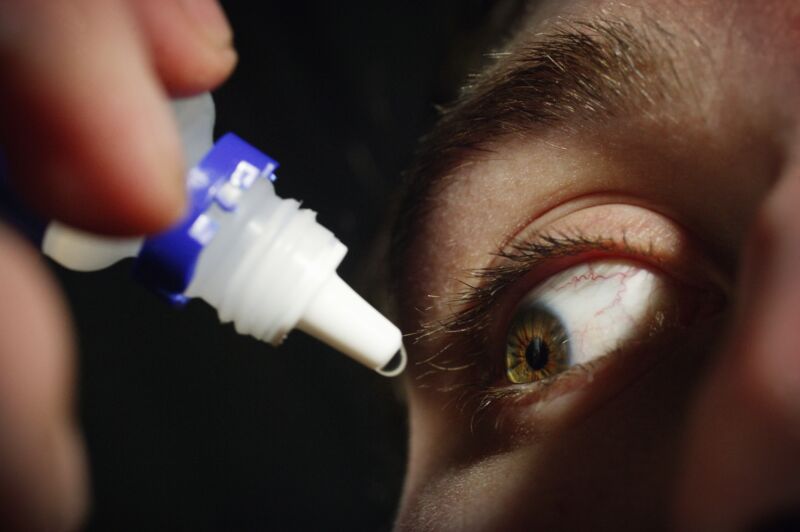
Enlarge (credit: Getty | UniversalImagesGroup)
This year has been marked by many terrifying things, but perhaps the most surprising of the 2023 horrors was … eye drops.
The seemingly innocuous teeny squeeze bottle made for alarming headlines numerous times during our current revolution around the sun, with lengthy lists of recalls, startling factory inspections, and ghastly reports of people developing near-untreatable bacterial infections, losing their eyes and vision, and dying.
Recapping this unexpected threat to health, the Food and Drug Administration on Tuesday released an advisory titled "What You Should Know about Eye Drops" in hopes of keeping the dangers of this year from leaking into the next. Among the notable points from the regulator was this stark pronouncement: No one should ever use any homeopathic ophthalmic products, and every single such product should be pulled off the market.
One of the Year’s Best Meteor Showers—the Geminids—Is This Week
As many as 120 meteors an hour will streak across the sky this week, creating brilliant tails of light, as part of the annual Geminid meteor shower, considered “one of the best and most reliable” of the year, according to NASA. With the help of Shauna Edson, astronomy education specialist at the National Air and […]
The post One of the Year’s Best Meteor Showers—the Geminids—Is This Week first appeared on Washingtonian.
Due to AI, “We are about to enter the era of mass spying,” says Bruce Schneier

Enlarge (credit: Getty Images | Benj Edwards)
In an editorial for Slate published Monday, renowned security researcher Bruce Schneier warned that AI models may enable a new era of mass spying, allowing companies and governments to automate the process of analyzing and summarizing large volumes of conversation data, fundamentally lowering barriers to spying activities that currently require human labor.
In the piece, Schneier notes that the existing landscape of electronic surveillance has already transformed the modern era, becoming the business model of the Internet, where our digital footprints are constantly tracked and analyzed for commercial reasons. Spying, by contrast, can take that kind of economically inspired monitoring to a completely new level:
"Spying and surveillance are different but related things," Schneier writes. "If I hired a private detective to spy on you, that detective could hide a bug in your home or car, tap your phone, and listen to what you said. At the end, I would get a report of all the conversations you had and the contents of those conversations. If I hired that same private detective to put you under surveillance, I would get a different report: where you went, whom you talked to, what you purchased, what you did."
After hack, 23andMe gives users 30 days to opt out of class-action waiver
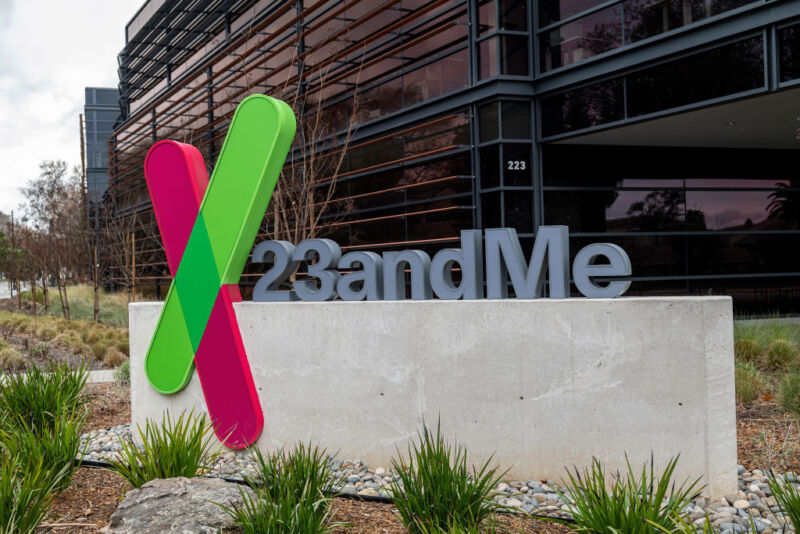
Enlarge (credit: Bloomberg / Contributor | Bloomberg)
Shortly after 23andMe confirmed that hackers stole ancestry data of 6.9 million users, 23andMe has updated its terms of service, seemingly cutting off a path previously granted to users seeking public accountability when resolving disputes.
According to a post on Hacker News, the "23andMe Team" notified users in an email that "important updates were made to the Dispute Resolution and Arbitration section" of 23andMe's terms of service on November 30. This was done, 23andMe told users, "to include procedures that will encourage a prompt resolution of any disputes and to streamline arbitration proceedings where multiple similar claims are filed."
In the email, 23andMe told users that they had 30 days to notify the ancestry site that they disagree with the new terms. Otherwise, 23andMe users "will be deemed to have agreed to the new terms." The process for opting out is detailed in the site's terms of service, instructing users to send written notice of their decision to opt out in an email to arbitrationoptout@23andme.com.
Google calls Drive data loss “fixed,” locks forum threads saying otherwise

Enlarge (credit: Google Drive)
Google is dealing with its second "lost data" fiasco in the past few months. This time, it's Google Drive, which has been mysteriously losing files for some people. Google acknowledged the issue on November 27, and a week later, it posted what it called a fix.
It doesn't feel like Google is describing this issue correctly; the company still calls it a "syncing issue" with the Drive desktop app versions 84.0.0.0 through 84.0.4.0. Syncing problems would only mean files don't make it to or from the cloud, and that doesn't explain why people are completely losing files. In the most popular issue thread on the Google Drive Community forums, several users describe spreadsheets and documents going missing, which all would have been created and saved in the web interface, not the desktop app, and it's hard to see how the desktop app could affect that. Many users peg "May 2023" as the time documents stopped saving. Some say they've never used the desktop app.
Drive has multiple ways of syncing files, which complicates any explanation or diagnosis of what's going on. The most suspect mode in the whole fiasco is the default "file streaming," mode which is actually cloud-first. Files get removed from your computer and stored in the cloud, saving space and leaving only a web link in their place. Perhaps a "syncing" issue could remove files from your computer before uploading (that still doesn't explain the claims of missing web documents, though).
Fungi join the list of organisms that can control when ice forms

Enlarge / A related species of Fusarium. (credit: Wikimedia Commons)
While it may be the reason behind tires skidding, pipes bursting, and closed roads making traffic a nightmare, ice doesn’t always form as easily as it seems. It often gets an assist from proteins made by fungi.
Never mind the common thinking that ice forms at 0° C (32° F). Though this is water’s freezing point, pure water will only freeze when temperatures plummet as low as minus 46° C (minus 50.8° F). So why does it usually freeze at zero anyway? Organisms such as bacteria, insects, and fungi produce proteins known as ice nucleators (non-protein nucleators can also be of abiotic origin). These proteins can kick-start the formation, or nucleation, of ice at higher temperatures than pure water would freeze at.
While the exact reason fungi make these proteins remains unknown, researchers Valeria Molinero of the University of Utah and Konrad Meister of Boise State University led a study that has revealed more about how fungal ice nucleators can both promote and hold back ice formation more efficiently than those of many other life-forms.
Millions of lead pipes would finally be ripped out under proposed EPA rule
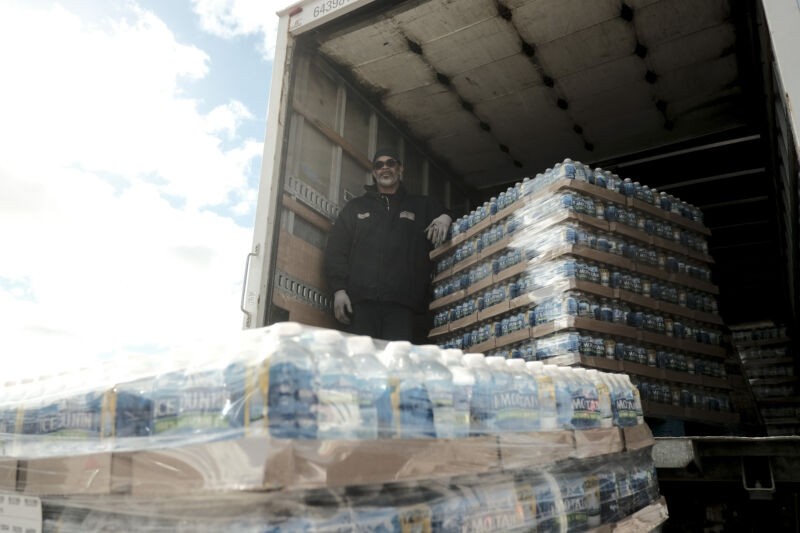
Enlarge / City workers unload a truck containing pallets of bottled water to distribute during a water filter distribution event on October 26, 2021 in Hamtramck, Michigan. The state Department of Health and Human Services has begun distributing water filters and bottled water to residents due to elevated levels of lead found in the drinking water due to old and un-maintained water pipes in the city. (credit: Getty | Matthew Hatcher)
The Environmental Protection Agency on Thursday proposed a stricter rule on lead in drinking water that would require that all lead service lines in the country be replaced within 10 years, and would lower the current lead action level in drinking water from 15 parts per billion to 10 parts per billion.
More than 9.2 million American households have water connections that include lead piping, according to the White House. Lead moves from the pipes into the water when the plumbing experiences corrosion, which is most severe when the water is acidic or has low mineral content. There is no safe level of lead, which is a toxic metal with wide-ranging health effects, including neurotoxic effects. In children, lead exposure can damage the brain and nervous system, slow development, lower IQ, and cause learning, behavioral, speech, and hearing problems. In adults, it can increase the risk of high blood pressure, cardiovascular problems, and kidney damage.
The EPA estimates that the rule will generate between $9.8 billion to $34.8 billion in economic benefits each year based on health improvement, including higher IQs in children, healthier newborns, lower cardiovascular risks in adults, and a reduction in care for attention-deficit/hyperactivity disorder.
Inflation high, cost of living no good
 Usually inflation is more of a slow thing that you don’t notice so much until you think back to the time when a burger was only a dollar. Prices increased much faster over the past few years though. For Bloomberg, Reade Pickert and Jennah Haque zoom in on the everyday items that are noticeably more expensive. Basically everything.
Usually inflation is more of a slow thing that you don’t notice so much until you think back to the time when a burger was only a dollar. Prices increased much faster over the past few years though. For Bloomberg, Reade Pickert and Jennah Haque zoom in on the everyday items that are noticeably more expensive. Basically everything.
I just wrapped up travel in a high cost of living area. The sticker shock on a simple grocery bill was brutal.
What to Know About the White House Holiday Ice Rink
There is an ice-skating rink on the White House’s South Lawn for the first time in 43 years this holiday season. First Lady Jill Biden unveiled the rink last night, after revealing the executive mansion’s decorations earlier this week. In 1980, former President Jimmy Carter and First Lady Rosalynn Carter also erected an ice rink […]
The post What to Know About the White House Holiday Ice Rink first appeared on Washingtonian.
There are now more land mines in Ukraine than almost anywhere else on the planet
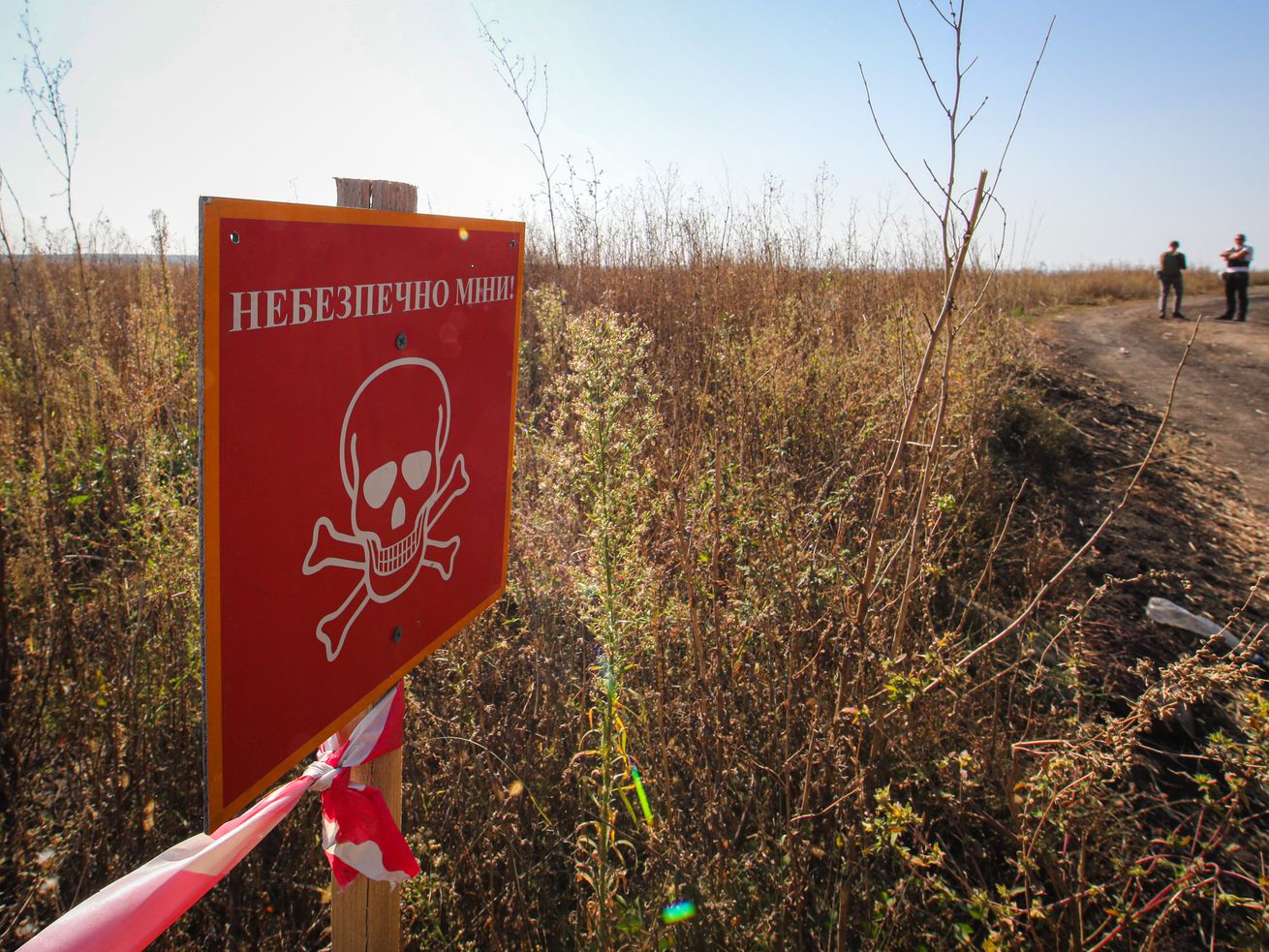
Ukraine is staring down a massive humanitarian challenge — now and into the future.
The sign is red, marked with a skull and crossbones and a warning: “Danger mines!” In parts of Ukraine that were contested or controlled by Russian forces, these are reminders that even in territory Ukraine has defended or retaken, the land itself is not fully liberated from war.
Russia’s full-scale invasion has made Ukraine one of the most mined countries in the world. In less than two years, the conflict has potentially created one of the largest demining challenges since World War II.
This includes anti-tank mines, which target vehicles — though if triggered, they do not distinguish between a battle tank and a school bus. There are also anti-personnel mines, which are intended to kill or hurt people, and more makeshift explosives, like booby traps, that serve similar aims. Unexploded artillery and cluster munitions also litter the landscape. Both sides have been firing off tens of thousands of rounds of artillery each day. Even if only a small percentage of those are duds, they can still detonate, maim, and kill, sometimes long after the fighting.
About 174,000 square kilometers of Ukraine is suspected to be contaminated with mines and unexploded ordnance, called UXOs. It is an area about the size of Florida, about 30 percent of Ukraine’s territory. This estimate accounts for land occupied by Russia since its full-scale invasion, along with recaptured areas, everywhere from the Kharkiv region in the east to areas around Kyiv, like Bucha. According to Human Rights Watch, mines have been documented in 11 of Ukraine’s 27 regions.
/cdn.vox-cdn.com/uploads/chorus_asset/file/25118044/Screenshot_2023_11_28_at_1.24.59_PM.png) Source: State Emergency Service of Ukraine, https://mine.dsns.gov.ua/
Source: State Emergency Service of Ukraine, https://mine.dsns.gov.ua/
Still, the 174,000 square kilometer figure is likely an overestimate, experts and international deminers say. Russia would not have the time, ability, or need to mine every inch of contested land. But until deminers or officials can confirm areas suspected of contamination free from it, the outcomes look the same. That land is off-limits.
“For every football pitch that is contaminated, there’s probably 100 football pitches that are not,” said Paul Heslop, chief technical adviser and program manager for mine action at the United Nations Development Program in Ukraine. “The humanitarian impact comes from the land that is contaminated because obviously you don’t get hurt if you walk through a minefield that isn’t a minefield,” Heslop added. “But the economic impact, and perhaps the social impact, and the impact on the global economy, on global food security, is coming from the 100 minefields that are not minefields.”
What is known — that Ukraine is heavily mined and polluted by unexploded remnants of war — and what is not — where, exactly, these dangers exist — are twin problems Ukraine faces. It takes resources, people, and time to declare places largely free from hazards.
And, right now, a lot of Ukrainian land is still inaccessible, under Russian control or too close to the front lines. That makes it unsafe for humanitarian deminers and vulnerable to recontamination. In the areas deminers can access, it takes even more resources and time to map those locations and then undertake the meticulous and perilous process of clearing mines and returning the land, fully, back to Ukraine.
But until either happens, it deepens and compounds the crisis for Ukrainian civilians in wartime. If a power station is suspected of being mined, technicians might not be able to quickly restore electricity if it goes out. An ambulance might have to take a longer route to the hospital to avoid particular roads.
The scale of the problem is so vast in Ukraine and the resources so finite — even with increasing international assistance and support — that authorities must prioritize. What can’t be investigated or cleared immediately may get cordoned off and marked with a warning sign.
The risks remain. As of this summer, the HALO Trust, an international demining NGO, recorded at least 700 civilian casualties because of land mines, likely an undercount. In 2022 alone, the International Campaign to Ban Landmines recorded more than 600 casualties from mines in Ukraine, a tenfold increase from 2021. The Ukrainian government said in November that mines and explosives have killed 260 civilians in 20 months of war. These mines and other unexploded devices will continue to complicate any rebuilding efforts and will injure and kill civilians now and potentially long after the hostilities end.
Even when the guns have stopped firing, said Erik Tollefsen, head of the Weapon Contamination Unit at the International Committee of the Red Cross, “the land mines remain active.”
This is a long-term challenge. Deminers are still clearing mines and cluster munitions from Vietnam, Laos, and Cambodia used by Americans in the Vietnam War. Farmers in Belgium and France, even now, find unexploded World War I shells buried in fields.
Ukraine already had demining operations ongoing before Russia’s full-scale invasion, to find ordnance from World War II and from Russia’s 2014 incursion. Deminers in Ukraine are still finding munitions from the WWII era now, as they begin, bit by bit, to rescue territory from the ongoing war.
Why Ukraine may be one of the biggest clearance challenges since World War II
The front line in the Ukraine war may be the the most heavily mined terrain on the planet. Russian troops built a formidable defensive belt, laid and relaid, that stymied Ukraine’s counteroffensive.
Ukraine, too, has laid anti-tank mines to slow Russian advances, and Western partners — including the US — have transferred anti-tank mines to Ukraine. Human Rights Watch has also alleged that Ukrainian troops fired anti-personnel mines near the town of Izium, in the Kharkiv region, which it recaptured from Russia last year. Ukraine is party to the 1997 convention that bans the use of anti-personnel mines (Russia is not), and Ukrainian authorities have said they will investigate.
The Ukrainian front line extends hundreds of miles, a daunting minefield. But the boundaries are clear and have been largely static, especially in the past year. Deminers know mines will be found here when the war ends.
The challenge exists when mines are not placed in patterns or appropriately mapped (as militaries are supposed to do), and instead are laid haphazardly or in a rush — or with the intention of terrorizing, as Russia has done in its withdrawal from parts of Ukraine. Ukrainian authorities have reportedly found mines in refrigerators or in toys. Russian troops have planted booby traps or grenades rigged with tripwires, making them even trickier to remove. Retreating Russian forces have booby trapped the bodies of dead soldiers. President Volodymyr Zelenskyy has accused Russia of mining the bodies of people killed.
“The Russians are incredibly crafty when it comes to placing booby traps, and they do it to catch out the unwary,” said Col. Bob Seddon, former head of bomb disposal in the British Army. “It’s not always to catch out the military that we’ve seen. In some of the villages and towns that the Russians have abandoned, they have left booby traps in civilian dwellings to catch out civilians returning.”
/cdn.vox-cdn.com/uploads/chorus_asset/file/25118720/1701277315.jpg) Sergey Bobok/AFP via Getty Images
Sergey Bobok/AFP via Getty Images
/cdn.vox-cdn.com/uploads/chorus_asset/file/25118710/1485205647.jpg) Scott Peterson/Getty Images
Scott Peterson/Getty Images
Mines are only one slice of the larger problem of UXO contamination. “It’s the artillery shells, and then it’s everything that is used in the course of the battle and is potentially hazardous because it’s explosive, and it hasn’t already exploded,” said Suzanne Fiederlein, director of the Center for International Stabilization and Recovery at James Madison University. Cluster munitions, which the US started sending to Ukraine this summer, release dozens of bomblets when fired, which scatter about and don’t always immediately explode as they should. But these cluster bombs, along with other kinds of artillery, can still be triggered later, detonating if they’re just slightly disturbed or picked up or moved.
“Just everywhere you can imagine, these things are just lying in wait,” said Col. Matt Dimmick (Ret.), Europe Regional Program Manager for Spirit of America, describing the aftermath of combat.
How to demine Ukraine
Military deminers and combat engineers must clear mines quickly, often under fire, so troops can advance. It is not about removing every single explosive, but instead creating a safe path to breach defensive lines.
[In the video above, the Ukrainian band Океан Ельзи has made a music video for its song “I’m going home” that follows the training and journey of a deminer.]
Humanitarian demining and clearance operate under a different set of rules. The standard is clear everything, with as much confidence as possible. Ukraine also has its own national mine action standards, developed from its robust experience of clearing ordnance from World War II and the 2014 conflict in the Donbas.
The first step is determining where the mine or ordnance contamination might be. Right now, Ukraine is working with that wide, wide net — basically, anywhere Russian troops entered or held — and needs to whittle away from there. The process begins with a nontechnical survey, which is a kind of fact-finding mission. Some places are easy to pinpoint: If active fighting occurred or a land mine or bomb goes off, it is a pretty sure sign the land is hazardous.
It can also mean scouring social media posts and local news reports. “This is people with binoculars, people going out with rudimentary search equipment to try and determine where the limits of explosive ordnance contamination exist,” Seddon said.
Teams will interview locals, the mayor, policemen, or even the military to try to gather more information. Satellite imagery helps, as do evolving technologies like drones and thermal imaging.
As the potential contaminated area narrows, the techniques become more precise: teams on the ground using metal detectors or dogs. (Patron is Ukraine’s official mine-sniffing mascot.) The goal of all of this is to reduce and reduce the area to what actually needs to be cleared to finally allow teams to go in and start to remove the mines.
Except, right now in Ukraine, not every mine and unexploded ordnance can be removed. It is an active conflict, and an overhead strike or heavy shelling can recontaminate the land almost instantly. Ukraine does not have the resources, equipment, or people to remove every land mine right now.
Ihor Bezkaravainyi, Ukraine’s Deputy Minister of Economy who oversees land mine clearance, said Ukraine is prioritizing “demining for civilian needs.” The aim is to make the land as usable and as safe as possible until everything can be cleared at a later time. “We can’t demine all dangerous parts of Ukraine at the same time,” he said.
Critical infrastructure is Ukraine’s top priority, such as roads, electricity lines, gas and water pipes, and power stations. So is civilian safety, making sure people can return to schools or hospitals safely. Then comes areas that intersect with Ukraine’s economy, specifically the grain fields that underpin the country’s agricultural sector.
This kind of mine clearance is what Heslop called “outcomes driven.” Full clearance — that is, removing every single mine — is not feasible with stretched resources and a fluid conflict. Instead, deminers may clear an area around a power station so workers can access it for necessary repairs and maintenance, but marking off the rest for future operations. Teams might remove mines so a farmer can plant at least some of his acreage, but not all of it. In a war, those are the trade-offs Ukraine has to make.
“We cleared this area and the power transformer was installed and 5,000 people got electricity. We cleared this area and a bridge was rebuilt, which took down the travel time to a hospital from four hours to 15 minutes,” Heslop said.
“Every task we do — because we’ve got so few people at the moment — has to have impact, has to have a positive outcome, has to be helping Ukraine in some way,” he added.
This is a long-term challenge for Ukraine, one that gets worse the longer the war goes on
Ryan Hendrickson, a retired Green Beret for the US Army Special Forces and founder of Tip of the Spear Landmine Removal, has been working with a team with on mine clearance in Ukraine. He said in early 2022, when Russia started leaving places like Bucha and Irpin to focus on the Donbas, people slowly started returning to their homes. It reminded him a bit of the aftermath of a hurricane or flood: people returning to see what’s left.
/cdn.vox-cdn.com/uploads/chorus_asset/file/25118703/1745610947.jpg) Vyacheslav Madiyevskyy / Ukrinform/Future Publishing via Getty Images
Vyacheslav Madiyevskyy / Ukrinform/Future Publishing via Getty Images
As they returned, so did the risks of land mines and other munitions buried among the ruins. The fear is that people, lives already disrupted by war, cannot wait for demining operations. Residents want to restart and rebuild, so they will move and sort through the rubble themselves. Farmers want to plow their fields, and so they’ll rig up makeshift machines to try to pull mines up themselves.
“People just can’t wait for the scarce resource, the clearance resources, so they take matters into their own hands, and perhaps put themselves at risk, but they need to pay the bills and feed their families,” Alex van Roy, of the Fondation Suisse de Déminage (FSD), said.
Education and awareness campaigns attempt to mitigate this risk. In Ukraine, announcements warning of land mines broadcast on the radio and blast out across social media. Animated ads run on trains, especially important to warn any Ukrainians who may be newly returning to their homes. Kids get coloring books, warning them not to touch things that look like mines. Patron, Ukraine’s mine-sniffing dog, visits schools and stars in music videos. Teams go door to door. There are murals everywhere. “It looks like propaganda, but we need to do it because it’s simple rules, and all Ukrainians must know about it,” Bezkaravainyi said.
[Patron’s theme song is shown in the video above.]
These tools fill the gaps until Ukraine can scale up, which can probably only happen on a large scale when the fighting ends. The US has pledged more than $182 million for humanitarian demining efforts, and other international donors and organizations are dedicating resources there. Ukrainian groups and figures sometimes crowdfund on social media, like Ukrainian comedian Mark Kutsevalov, who is raising money for demining equipment, documenting his efforts on Instagram.
But the World Bank estimates it will cost about $37 billion to demine Ukraine. Even with assistance and expertise from international NGOs and other organizations, much demining is done by Ukrainians themselves — school teachers, taxi drivers, and moms who are trained in the incredibly dangerous work. Ukraine has about 3,000 demining specialists, with plans to train more, though Ukrainian officials have said they need thousands more.
Ukraine’s deep experience with demining has also become something of a hindrance, as rules put in place to protect safety procedures and processes add to the bureaucracy and red tape. Officials in Ukraine are aware of these challenges, but changing the laws requires acts of Parliament. Some of it, too, is Ukraine’s desire to show its population that demining is a priority and that the government is capable of delivering to its population.
This is a problem for Ukraine now, as the war, and if and when the fighting ends. This isn’t a new lesson of conflict; the world’s experiences with the long-tail dangers to civilians from mines and artillery led to global conventions banning anti-personnel mines and cluster munitions. But the efforts to protect civilians, in the near- and long-term, often collide with the realities of the battlefield. Militaries use land mines because, on the battlefield, they believe they work in combat.
But the weapons themselves do not discriminate between tank or ambulance, soldier or civilian. Which means, in Ukraine, some cities and towns exist in a precarious limbo, free of Russian occupation, but not its remnants. “I used to go here before February 24. I could go over here,” Hendrickson said, describing the frustration of some Ukrainian communities. “Why can’t I go there now? Why is there red tape and a mine sign in front of this? I want my land back. I want my home back. I want — boom.”
Translation and additional reporting by Olena Lysenko.
Google to pay Canada’s “link tax,” drops threat of removing news from search

Enlarge (credit: Getty Images | Manuel Augusto Moreno)
Google has agreed to pay Canadian news businesses $100 million a year to comply with the country's Online News Act, despite previously saying it would remove Canadian news links from search rather than make the required payments.
Google and government officials agreed to a deal that lets Google negotiate with a single news collective and reduce its overall financial obligation. Facebook owner Meta is meanwhile holding firm in its opposition to payments.
"Google will contribute $100 million in financial support annually, indexed to inflation, for a wide range of news businesses across the country, including independent news businesses and those from Indigenous and official-language minority communities," Minister of Canadian Heritage Pascale St-Onge said in a statement today.
FDA warns chemical company not to mix brake cleaner into hand sanitizer

Enlarge (credit: Getty Images | Jena Ardell)
A chemical manufacturing facility in Wisconsin has drawn the ire of the Food and Drug Administration for making hand sanitizer with the same equipment it uses to make products with toxic industrial solvents and chemicals, such as automotive brake parts cleaner. The practice is a clear violation of manufacturing standards and could lead to harmful cross-contamination, the FDA said.
The agency sent a warning letter dated October 26 to the maker of the hand sanitizer, Brenntag Great Lakes, LLC, in Wisconsin. The letter, which redacted the name of the hand sanitizer, stated that the agency had found "significant violations" in an inspection in the spring and that the company's responses since then were "inadequate."
Toxic hand sanitizers became an alarming problem in the early days of the COVID-19 pandemic, when demand for the germ-fighting gels skyrocketed and manufacturers rushed products to market. Hundreds of products that flooded the market were found to contain methanol, a toxic alcohol that can cause harm via inhalation, ingestion, and skin absorption. Use of the products leads to poisoning, blindness, and even death, the FDA reported.
Sam Altman officially back as OpenAI CEO: “We didn’t lose a single employee”

Enlarge (credit: OpenAI / Benj Edwards)
On Wednesday, OpenAI announced that Sam Altman has officially returned to the ChatGPT-maker as CEO—accompanied by Mira Murati as CTO and Greg Brockman as president—resuming their roles from before the shocking firing of Altman that threw the company into turmoil two weeks ago. Altman says the company did not lose a single employee or customer throughout the crisis.
"I have never been more excited about the future. I am extremely grateful for everyone’s hard work in an unclear and unprecedented situation, and I believe our resilience and spirit set us apart in the industry," wrote Altman in an official OpenAI news release. "I feel so, so good about our probability of success for achieving our mission."
In the statement, Altman formalized plans that have been underway since last week: ex-Salesforce co-CEO Bret Taylor and economist Larry Summers have officially begun their tenure on the "new initial" OpenAI board of directors. Quora CEO Adam D’Angelo is keeping his previous seat on the board. Also on Wednesday, previous board members Tasha McCauley and Helen Toner officially resigned. In addition, a representative from Microsoft (a key OpenAI investor) will have a non-voting observer role on the board of directors.
Nvidia CEO: US chip independence may take 20 years to achieve

Enlarge / Founder and CEO of NVIDIA Jensen Huang speaks during the New York Times annual DealBook summit on November 29, 2023, in New York City. (credit: Michael M. Santiago / Staff | Getty Images North America)
The US could be up to two decades away from maintaining its own domestic chips supply chain, Nvidia Corp.'s CEO, Jensen Huang, told an audience gathered in New York for the New York Times’s DealBook conference.
Nvidia is a giant in the semiconductor industry, and Huang said his company's success depends on "myriad components that come from different parts of the world," Bloomberg reported. "Not just Taiwan," Huang said, where Taiwan Semiconductor Manufacturing company makes the world's most advanced semiconductor technology.
“We are somewhere between a decade and two decades away from supply chain independence,” Huang said. “It’s not a really practical thing for a decade or two.”
How much more income people need to be happy
For the Wall Street Journal, Joe Pinsker reports on income and happiness, or more specifically, on the raises people said they needed to be happy. The more people have the more they need.
Tags: happiness, income, Wall Street Journal
EVs have 79% more reliability problems than gas cars, says Consumer Reports

Enlarge (credit: Getty Images)
Widely accepted wisdom has it that electric vehicles are easier to maintain than those with internal combustion powertrains. It seems intuitive—EVs have many fewer moving parts than cars that have to detonate small quantities of hydrocarbon fuel thousands of times a minute. But the data don't really bear out the idea. In fact, according to data collected by Consumer Reports, EVs are significantly less reliable than conventionally powered cars.
CR is known for buying cars for its own test fleet, but for its annual auto reliability survey, the organization cast a wider net. Specifically, it gathered data from 330,000 owners of vehicles from model year 2000 onwards, and it uses that survey data to generate reliability scores for each vehicle and model year.
The results are a little inconvenient for the EV evangelist. EVs had 79 percent more reliability problems than a gasoline- or diesel-powered vehicle, on average. Plug-in hybrids fared even worse; these had 146 percent more issues on average than the conventional alternative. But simpler not-plug-in hybrids bucked this trend, with 26 percent fewer reliability problems than conventionally powered vehicles.
Tough battery-sourcing requirement for EV tax credit may be relaxed

Enlarge / Democratic Senators Joe Manchin (Left) and Debbie Stabenow (Right) don't exactly see eye to eye on the auto industry's transition to electric vehicles. (credit: Tom Williams/CQ-Roll Call, Inc via Getty Images)
The new and somewhat-complicated rules governing which cars do or don't qualify for the new clean vehicle tax credit look like they might get tweaked a little in the near future.
Before, the tax credit was linked to the battery-storage capacity of a plug-in hybrid or battery-electric vehicle. But the Inflation Reduction Act changed that—now a range of conditions must be met, including final assembly in North America and an annually increasing percentage of locally sourced minerals and components within that battery pack.
On the one hand, the domestic sourcing requirements are beneficial because they are stimulating the development of local battery mineral refining and manufacturing here in the United States, adding well-paying jobs in the process. But the new rules have also significantly reduced the number of EVs that qualify.




